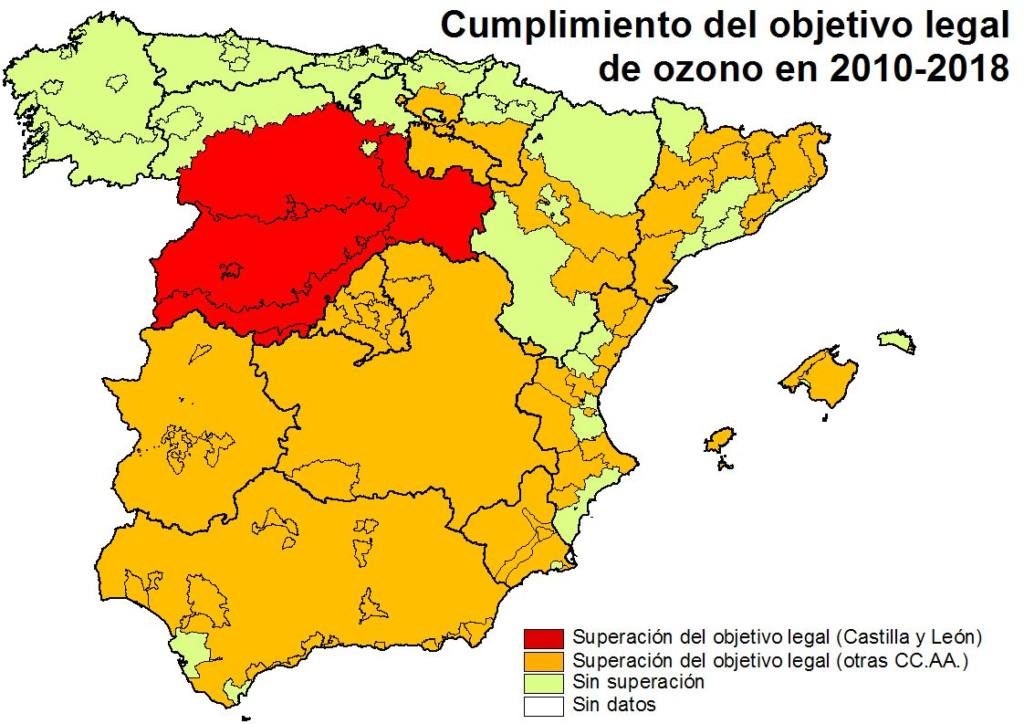As a pioneer ruling in Spain, the High Court of Justice of Castile and León understands that the regional plans for the air quality are independent of the National Plan, whose inexistence cannot be used as an excuse not to act at the regional level. The sentence, which is a result of an Administrative action initiated by Ecologistas en Acción, can lead into important consequences for a dozen of Autonomous Communities (regions) that also break the regulations, just like the Central Government.

By sentence of the 19th October, 2018, the Chamber for Administrative Litigation of the High Court of Justice of Castile and León has declared the obligation of the Autonomous Administration of this Community to draft and approve “as soon as possible” the mandatory Plans for the Air Quality Improvement for the half dozen areas where the limit values for health and/or vegetation protection, established by the European and Spanish laws on air quality for the tropospheric ozone, have been exceeded between 2010 and 2014.
The areas where the Castile and León regional government is forced by judicial decision to draft plans for the air quality regarding ozone are Salamanca, North Douro, South Douro, South Mountain, Tiétar Valley and Alberche, and South and East of Castile and León. Valladolid, Soria and Demanda should also be added for breaches in previous years, coming to a total surface of 75,500 square kilometres and affecting a population of 1,755,000.
The High Court understands that the article 16th of the State Act for Air Quality and Atmosphere Protection and the article 24th of the Royal Decree 102/2011, of the 28th January, related to the air quality improvement, forces the Autonomous Communities to develop plans for the air quality improvement in order to reach the air quality goals in the established term in areas where the levels from one or more regulated pollutants exceed those goals, as in the case of ozone.
The Sentence declares that the existence of high ozone levels in practically the whole territory of Castile and León, Spain and the South of Europe, highlighting that this is not a local and regional problem but national and international, “will not undermine the imperative nature with which the quoted precepts regulate the duty to act of de Autonomous Government in the development and passing of the Plans for the air quality improvement”.
The magistrates highlight “that the request from which stems the present appeal was submitted in 2016, but already in 2012, areas in which the limit values were reached could be detected, as can be seen in the reports emitted by the Autonomous Community itself, with the introduction of no plan at all after more than six years”. Therefore it is a negligence that is risking the health of the population of Castile and León.
The High Court finishes declaring that “the necessity of a national plan before the development of regional plans cannot be argued as the defendant Administration pretends because, as it was stated, they are independent instruments although the correlation and coherence between them is needed”. It is important to remember that the Spanish Government has not drafted the National Plan for Tropospheric Ozone arranged in 2015, consequently the National Court has an open prosecution against the Spanish Government due to its inaction.
The sentence, which condemns the Junta of Castile and León to bear the costs of the process, and which can be appealed before the Supreme Court, constitutes a judicial precedent that prefigures the solution to the situation of non-compliance with the legal standards of air quality due to ozone pollution in several areas from a dozen Autonomous Communities (Andalusia, Aragon, Balearic Islands, Castilla-La Mancha, Catalonia, Valencian Community, Extremadura, Madrid, Murcia, Navarra and Basque Country), leaving 18 million people and 340,000 square kilometres affected.
For Ecologistas en Acción, the declaration of the High Court of Castile and León is highly relevant because it is the first time that a Spanish Court declares the legal obligation of drafting plans on air quality to tackle ozone pollution, basing the decision on national law, being consistent with the similar resolutions -although on other pollutants-, introduced during recent years by national courts from Germany, Belgium, Nederland, Poland, United Kingdom or Czech Republic.
Furthermore, the environmental organization recalls that the European Parliament keeps a petition opened on the lack of ozone plans in Spain, after the session of the Committee on Petitions held on the 9th October in which it was agreed to request information to the Kingdom of Spain on its legal breach. Therefore, Ecologistas en Accion calls on the Ministry for the Ecological Transition to develop and approve the National Plan for the Tropospheric Ozone committed years ago, and urges the Autonomous Communities to develop their own plans.
Tropospheric ozone, also known as “bad” ozone as opposed to the one of the stratosphere, is a secondary pollutant produced by the reaction between nitrogen dioxide and hydrocarbons, emitted by transport and some industries, in the presence of solar radiation. By inhalation, it causes irritation for the eyes and of the upper respiratory tract, reduced pulmonary function, an increased risk of acute respiratory diseases (asthma, COPD) and aggravation of cardiovascular pathologies, resulting in hospitalization or even death.
The European Environment Agency estimates 1,800 premature deaths per year in Spain as a result of exposure to ozone levels such as those usually recorded in summer in both central and southern Spain. Ozone, in addition to people, is toxic to vegetation, damaging forests and reducing crop productivity.
The sentence can be consulted in https://www.ecologistasenaccion.org/?p=108540 (Spanish)
Information about ozone and contamination in Spain: www.ecologistasenaccion.org/ozono (Spanish)

